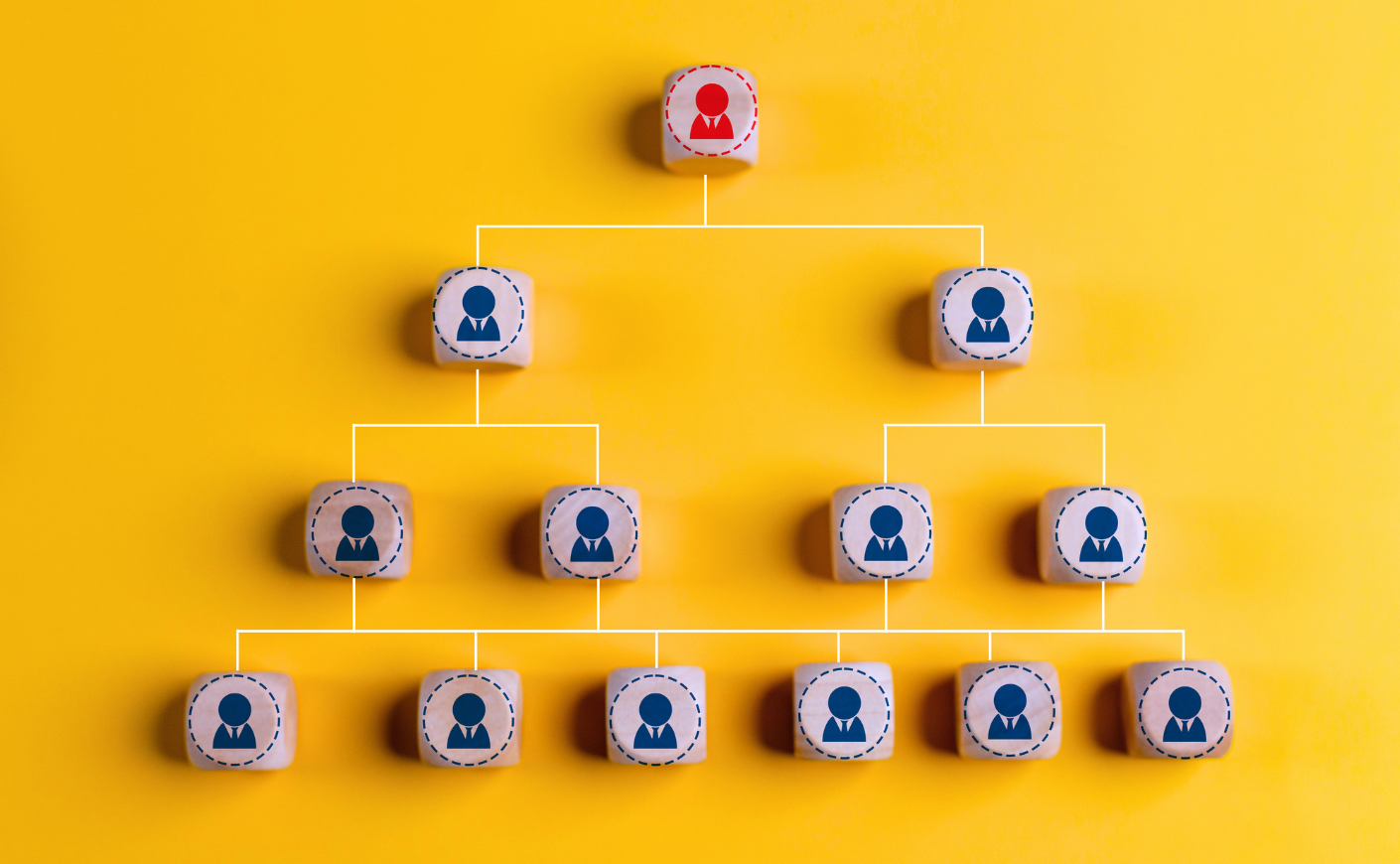It’s a scenario that’s all too common in Instagram DMs and on Facebook Messenger: An old acquaintance with whom you haven’t spoken in years messages you out of the blue, usually with something like, “Hey hun!” But this person’s not trying to catch up — they’re trying to sell you something. And that’s all because of the multilevel marketing business they recently joined.
When you think of multilevel marketing, you probably conjure up images of the past few decades: Mary Kay makeup, Pampered Chef cookware, or Tupperware parties in ‘50s and ‘60s living rooms. But in her new book, Little Bosses Everywhere, NY Magazine journalist Bridget Read explains that the origins of MLM actually go back almost as far as the founding of America — and that, rather than exemplifying the American individualistic spirit, these companies helped shape the national identity.
We spoke to Read about what most people get wrong about multilevel marketing, the difference between MLMs and fraudulent schemes, and this industry’s global influence — and its close ties to Project 2025.
Katie Couric Media: What made you decide to write this book?
Bridget Read: I did a short article for New York Magazine about multi-level marketing companies during the pandemic, and it left me with more questions than answers. In describing how MLM works for an article-length piece, I had to skip over so many things that don’t make sense about the business model. Ultimately, I realized that you need a whole book to tell the story of multilevel marketing, because it’s a story as old as the American project itself.
I would define multi-level marketing as someone selling a product, and then for each person they recruit, they earn a portion of their commissions. Is that true?
That’s definitely the industry’s definition, but what I learned in my research is that what you’re actually getting paid for are the purchases of sellers under you. The Multilevel Marketing Company is only tracking how much my “downline,” the group of people I’ve recruited to sell more products, is buying. In theory, that could be a mix of customers and participants. However, there is considerable evidence that suggests most people buying inside MLMs are themselves participants.
MLMS treat those purchases as sales because, in theory, an MLMer can go out and resell the products. That’s what they’re supposed to be doing. But in reality, most of them have a ton of products lying around at home. The revenue comes from recruiting people, and what those recruits are buying. So there really aren’t product sales happening in the way you think there are.
Just think about how strange that is: The idea that anyone would buy these expensive products in this weird way from a friend, where they’re sort of harassing you online? It doesn’t make any sense as a business model.
Some of the products can be good, right? Tupperware is a household name, for instance.
The products can be good, but where MLM falls into fraud and certain companies have been prosecuted as pyramid schemes is the concept of the business opportunity. That’s the part that, over and over again, has been found to be often fraudulent, because the idea that it’s relatively easy to make money is not true.
[They sell the idea that] with this little investment, you can then build a team where you’re making a living from doing that. When really, the people who continue to make a living from doing it, statistically and overwhelmingly, do it by recruiting new participants.
If the majority of people in MLMs aren’t making money, why is it so hard for them to leave?
There’s a lot of really intense in-group association that makes people compare MLMs to cults. You’re using your own kind of language, and they’re plying you with positive attention, so you feel like you’re part of a family. Also, many of these companies have a policy against what they call crosslining, which is that you’re not supposed to talk to anybody who’s at your level. And you’re definitely not supposed to send negativity down to your downline. That creates this sort of Draconian environment, where nobody’s complaining and nobody shares when they’re losing money. That makes it really hard to dissent, to ask questions, and ultimately, to leave. When people do leave, then there’s a lot of pressure [for those still inside] to cut those people out. Most people I’ve spoken to who leave MLMs are cut out of chats; their friends stop talking to them. You really do feel like you’re being cut out of your family, so that also makes people really afraid to speak out.
Why do you think these companies are so disproportionately populated by women?
Women’s positions are much more precarious in the labor market than men, and have been for a long time. During the ‘60s and ‘70s, many more women went to work, but statistically in the United States they went to work in the industries and areas where labor is much more fragile: retail, the service industry, clerk-type work, secretaries. These jobs are not very secure, wage-earning jobs. The people in them are often independent contractors, or they’re making minimum wage. They don’t get benefits, and they’re much more subject to the vicissitudes of the market, layoffs, things like that.
So that means more women are stuck at home; often, they’re doing childcare, too. They are simply more vulnerable to the pitch that you can make a living from home, that it’s flexible, and that you’re not subject to clocking in somewhere every day, which often does conflict with childcare. MLM flourishes among all kinds of women.
How does the government differentiate between an MLM and an illegal pyramid scheme?
According to the FTC, there is such a thing as legitimate multi-level marketing, which stems from a decision made by the FTC in 1979, called the Amway Decision. Amway was, and still is, the world’s largest MLM, and the most politically powerful and influential one. Betsy DeVos’s father-in-law, Rich DeVos, is one of the founders of Amway, along with his partner, Jay Van Andel. Amway comes from the same line of old MLMs that created some of the companies in the seventies that were found to be pyramid schemes.
When the FTC sued, Amway argued that there were rules in place that kept the company from being a pyramid scheme. They claimed [as a seller] you had to have a certain amount of customers, you had to have 70% of your products resold, or you wouldn’t get any commissions. They also claimed that Amway bought back any products you weren’t able to sell, and the FTC decided that they would accept those rules without any evidence — Amway didn’t have to prove that its rules were enforced. They didn’t have to prove how many of their recruits make a living from actually selling the products. The FTC accepted Amway’s word that it regulated itself.
Herbalife was another huge MLM that the FTC eventually sued. Though the company settled, the FTC found that the overwhelming majority of Herbalife participants did not make money, and many of them lost money. Herbalife was sued for $200 million and supposedly restructured their business. But again, there’s really very little evidence that the enforcement has changed much, and so the idea of legitimate MLM is still a gray area — which is why the FTC website basically warns people not to participate in them, even though they’re technically allowed.
Can you tell us more how the DeVos family used their political influence to support Amway?
Part of what led to the Amway decision was that, by the time the judge was making his ruling, DeVos, Van Andel, and Amway were already incredibly powerful political entities. They are Calvinist Christians from Michigan; the Congressman from their district was Gerald Ford. By the time Ford was president, they were very close to him and were big donors. Then they backed Ronald Reagan, who obviously became president in 1980. During that time they were very influential, sending a lot of money to the Republican party and to think tanks like the Heritage Foundation.
Since then, they’ve continued to be one of the largest dark-money donors in the Republican party — just like the Mercers and the Kochs. Betsy DeVos, even long before she was confirmed as education secretary, said in a speech in the ‘90s, “My family is one of the largest donors to the Republican party, and now we’re going to get something in return.”
So, they’ve used their influence to help pass the policies that they want, which largely hew to an ultra-conservative free-enterprise philosophy. That includes making the government very small, deregulating all kinds of industries, increasing privatization, and lowering taxes. They contributed money to Elon Musk’s PAC this election cycle, and what DOGE is doing really closely aligns with their vision of the government. They also donate a substantial amount to the Heritage Foundation, and Project 2025 aligns closely with their views. So what we’re seeing happening in the Trump administration is a big part of the ideology that powered multilevel marketing.
Do they have a direct connection to Project 2025?
Yes. Barb Van Andel-Gaby, who is Jay Van Andel’s daughter, is the chairman of the board of the Heritage Foundation, and when she inducted Kevin Roberts — who wrote the introduction to Project 2025 — she literally said, “He is going to increase our influence on Capitol Hill.” Project 2025 includes exactly what Betsy DeVos said about the Education Department, which is that she wanted to eliminate it. It has a whole section on independent contractors, and MLM relies on as loose independent contractor laws as possible. They want to significantly limit the FTC’s ability to regulate private companies and private enterprises, which would obviously greatly benefit MLMs.
Who do you hope reads this book?
I hope everyone picks up this book, because so much of what has happened in our country in the last 40 to 50 years in terms of the widening inequality gap actually comes from the ideology that multilevel marketing has spread throughout the United States — and now the world, since the majority of MLM participants are actually overseas. That ideology is one of ruthless individual pursuit of wealth, and that instead of critiquing that inequality gap, [MLM philosophy says] we can all just keep going in our own little side hustles, and we all have the chance to be our own kind of Bezos one day.
Can you tell us about the time that you went undercover at the Mary Kay convention?
MLM conventions are extremely insular events. Typically, you have to be part of an organization to attend. I did not join Mary Kay, but I ended up going to the convention, and relying on the fact that I’m a white blonde woman who can blend in with the crowd. It was a really wild experience, but it also made me feel much more sympathetic and empathetic toward the women who do it.
I was moved by a lot of the stories of redemption and success, even though many of them are probably not true — I’ve spoken to and seen a lot of evidence of women in Mary Kay and other MLMs who’ve been celebrated for their sales, but end up actually having simply spent a lot of money. One woman whom I spoke to at length about her journey in Mary Kay was championed as a saleswoman, but she was just spending and spending and spending. She ultimately spent more than $75,000 on Mary Kay products over a decade.













